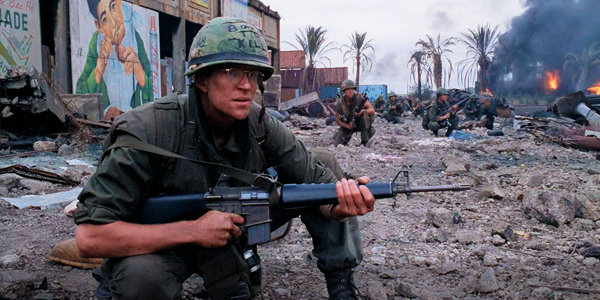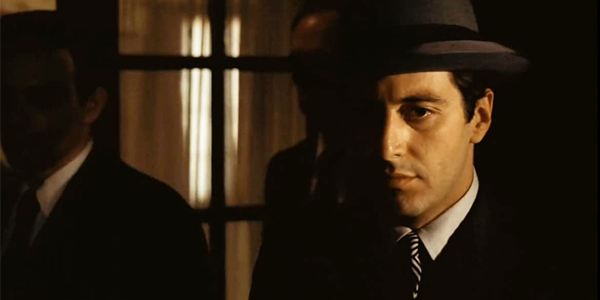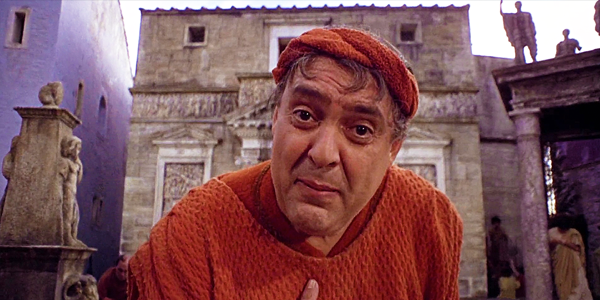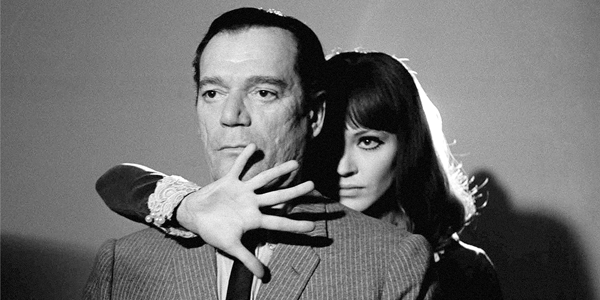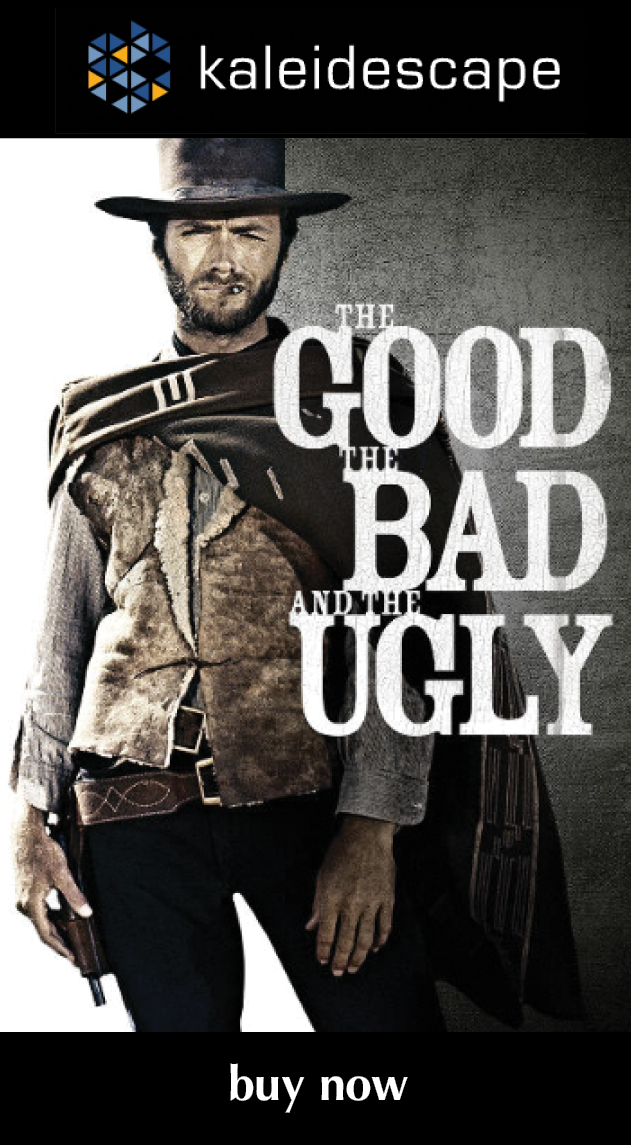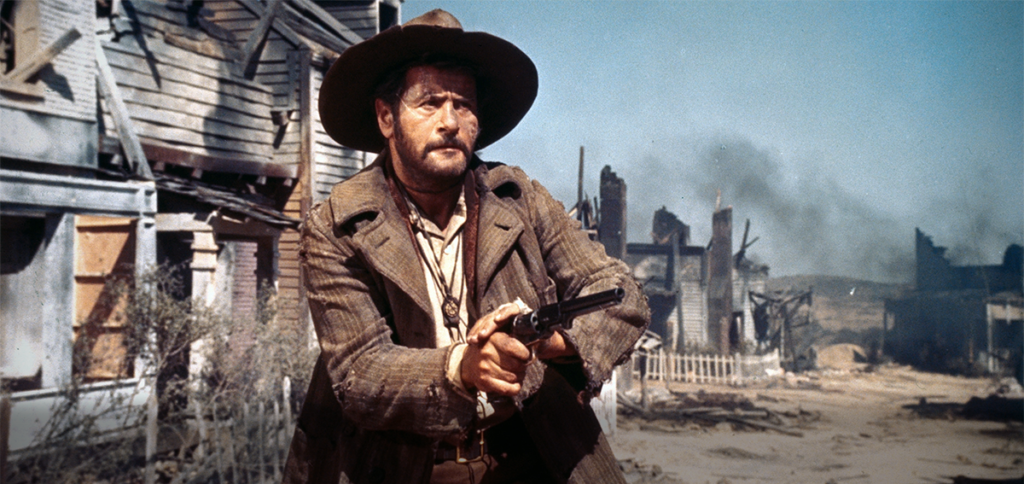
review | The Good, the Bad and the Ugly
Calling this roguish Sergio Leone romp a classic western kind of misses the point—it’s something so much bigger and better than that
by Michael Gaughn
August 18, 2022
Most movies, especially contemporary ones, are first and foremost about genre, about making the audience feel snug within a certain set of expectations and conditions and never too radically disrupting the womb-like sense of security that induces. Sergio Leone is, of course, the guy who created the spaghetti western but by the time of The Good, the Bad, and the Ugly, he had moved well beyond the genre into a realm that can best be described as, for want of a better term, pure film.
While GBU has elements of the American western and its Italian offshoot, it’s just as much a war movie, an epic, and an action film; but it subsumes all of that into a much greater whole. It never stops to do a set piece and then smugly nudge the audience with a, “Hey, look what I just did.” Instead, Leone shows throughout an incredible, seemingly naive, love for making movies in that place beyond genre—and, like all the best films, beyond time. And it all just seems to pour out of him like a rustic but still elegant wine.
This movie is undeniably part epic but it’s an intimate one. Like Lawrence of Arabia, it’s about, first, the individual and the consequences of individual action and, second, about the larger stage those actions play out on. It doesn’t rise or fall based on its battle scenes or creating a sense of grandeur but on the crafting of the three principals. But there’s far less of a one-to-one relation between the individual and that larger stage here than in Lawrence. GBU is far looser, more picaresque, roguish, puckish. (It’s like a Cormac McCarthy novel—if McCarthy had a sense of humor, didn’t have an adolescent fixation on depravity, and allowed even a smidge of humanity into his work.)
Like all of Leone, this is 100% a director’s movie. The actors are basically marionettes to be positioned and manipulated, no more or less important than the settings, the score, and the endlessly inventive, often sinuous camera moves. His ability to so carefully and completely devise the action underlines just how little most actors’ performances have to do with their abilities and far more with how they’re shot, cut, and above all, directed.
Find me a great Lee Van Cleef performance anywhere outside this film—it can’t be done because he never worked with another director this good. Clint Eastwood has the acting range of a doorknob but he was savvy enough to surrender completely to Leone, who created the terse, snarling persona Eastwood was able to exploit throughout a long and lucrative career. The only real actor here is Eli Wallach—which explains why he gets almost all the lines and all the big scenes. Peer beyond the Eastwood aura and you realize this is really Wallach’s film.
Because GBU is more than anything an exceptionally pure projection of Leone’s imaginative world and not just an excuse for actors to strut in front of the camera, every aspect of the film carries equal weight. But first among those equals is probably atmosphere. The depiction of the fringes of the Civil War might not be authentic but, as far as creating the most evocative stage possible for the action, it feels authentic—in the same way John Ford’s vision of the west in My Darling Clementine and Fort Apache and (although there’s probably some kind of law against my saying this) D.W. Griffith’s portrayal of Civil War battles in The Birth of a Nation may or may not be accurate but are so compelling they become how we want that period to feel and be.
That ability to make atmosphere enthralling helps explain why this film was such a huge influence on Full Metal Jacket—in particular the odd commingling of silence and menace in the sequence in the abandoned town still being hit with cannon fire. Both Leone and Kubrick were masters of summoning up a palpable mood, so it’s not surprising they stole from each other shamelessly.
This is essentially a silent film—you could watch it with the sound off and still know everything that’s going on and, more importantly, feel the emotion. It’s also a deliberately paced film—surprisingly so for a western—and while Leone makes that work for the most part, the material is just too thin for those kinds of larghetto beats to be sustained throughout the extended cut here. With most films that would be a dealbreaker; here it’s just a quibble.
The transfer is astonishingly, seductively good. This is the way older films should look in 4K. The images are alive with grain, which is so essential to Leone’s style that it’s scary to think anyone would ever think of scrubbing any of it away—let alone all of it, à la The Godfather. This release is sans HDR but it’s hard to see where going there would do much to enhance its impact. It would likely result in the usual tradeoff of grit for polish, and if The Good, the Bad and the Ugly is about anything, it’s grit.
(I have to harp on this string again: If the main titles are any indication of what HDR would yield, then we should all pray that day never comes. There’s the usual attempt to enhance the title cards and turn them into a slideshow instead of doing the obvious and right thing of having them feel like they’re being run through a film gate—in other words, make them feel like they’re part of the movie. Fortunately, so much of the sequence depends on animation that some of the analog feel is still there, but it just makes the cleanup look that much more alien. And someone deserves to be eviscerated for ruining the film’s last, lingering shot by making “The End” look like something out of an iMovie project.)
There’s nothing wrong with the stereo and 5.1 mixes; they’re just not appropriate. And it continues to be a bone of contention that the original mono tends to get kicked to the curb with 4K releases of older movies that supposedly represent the filmmakers’ intent.
The Good, the Bad and the Ugly is, of course, a classic film, but not a perfect one—but its rough edges have a lot to do with its power. For as long and epic as Once Upon a Time in the West is—and that film doesn’t waste a single second of screen time—GBU actually has a more drawn-out pace, which sometimes drags, but more often than not is languorous in the most generous sense of that word. And there are moments when style lapses into affectation, like during the final showdown, where Leone cuts about five times too often to extreme closeups of shifting eyes and twitching eyebrows, to the point where it starts to feel like a Monty Python sketch. But you forgive him because of his Rabelaisian drollery and because he made it clear from the moment Eli Wallach crashes through the window at the beginning of the film that this was going to be a very tall tale indeed.
Michael Gaughn—The Absolute Sound, The Perfect Vision, Wideband, Stereo Review, Sound & Vision, The Rayva Roundtable, marketing, product design, some theater designs, a couple TV shows, some commercials, and now this.
© 2025 Cineluxe LLC


